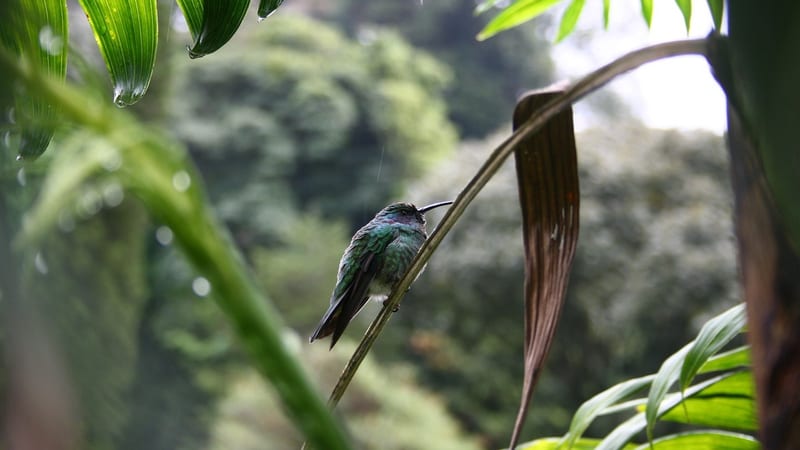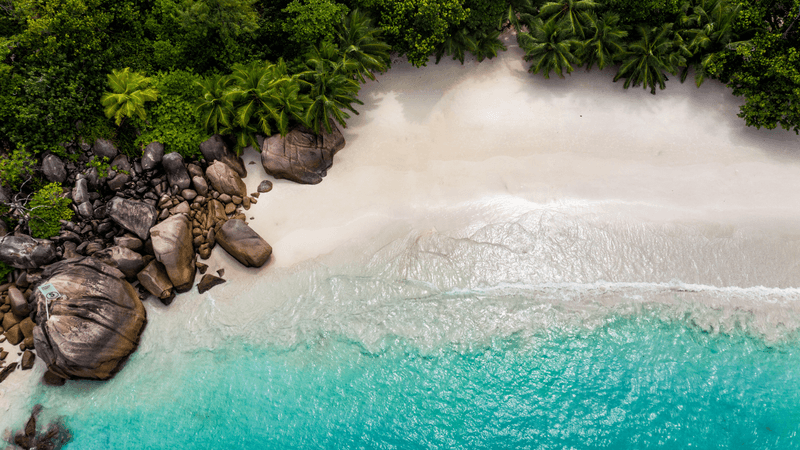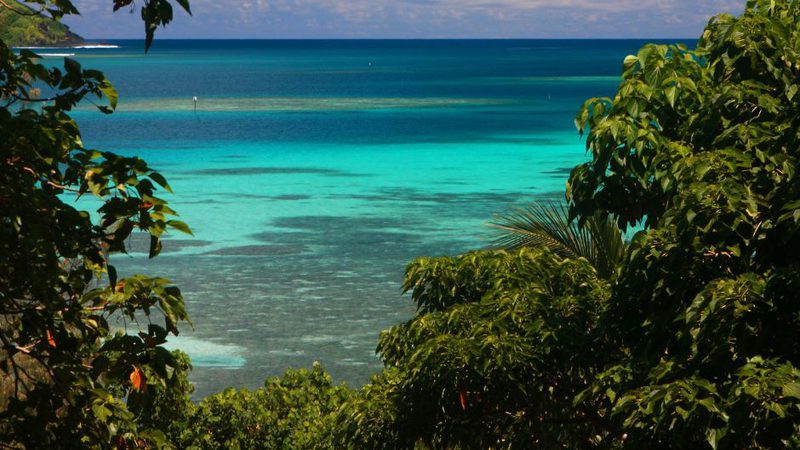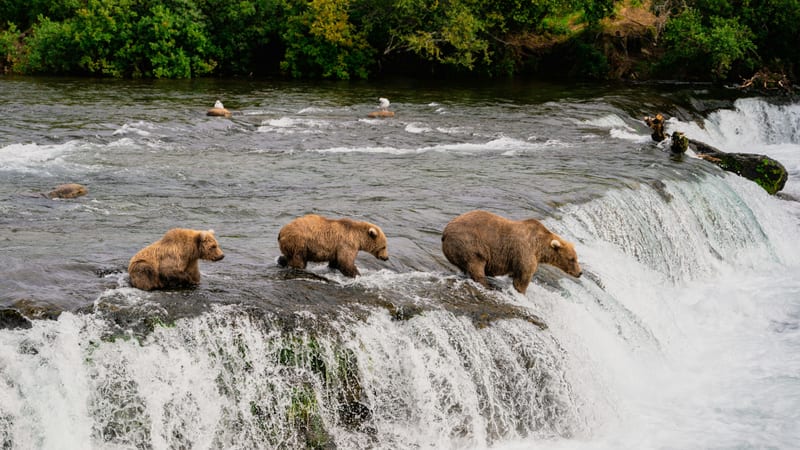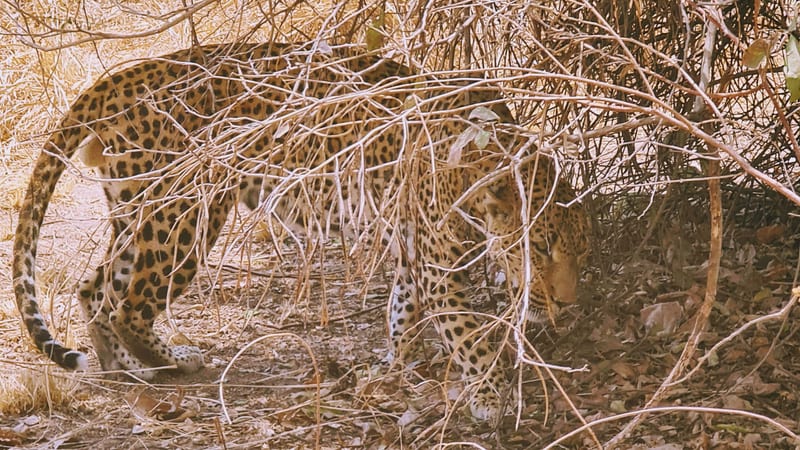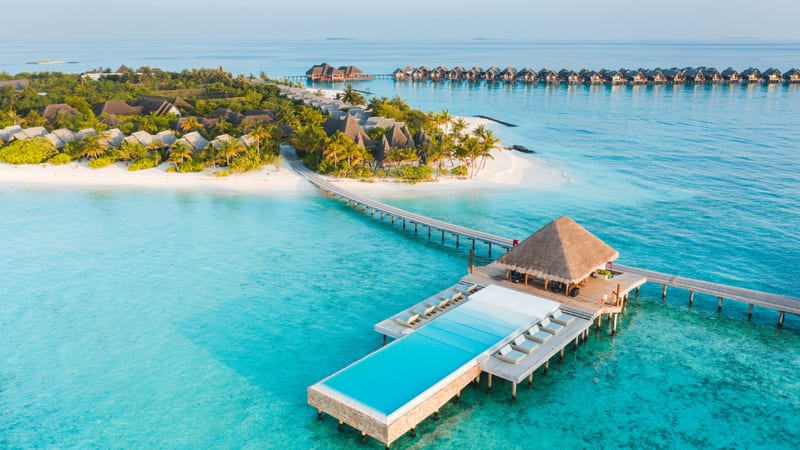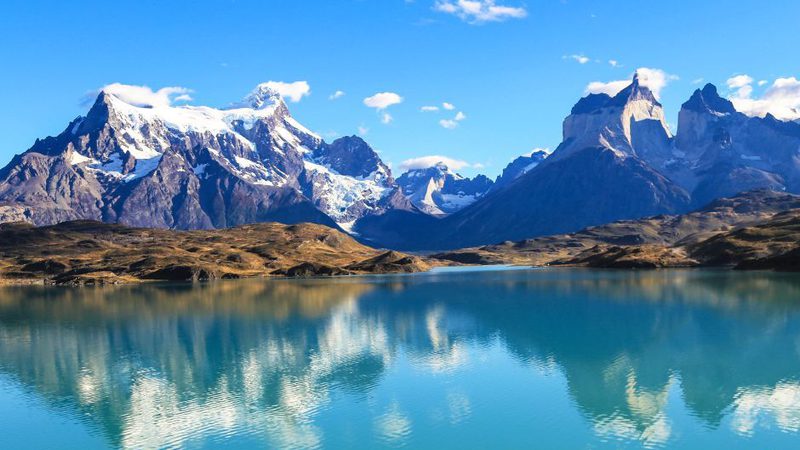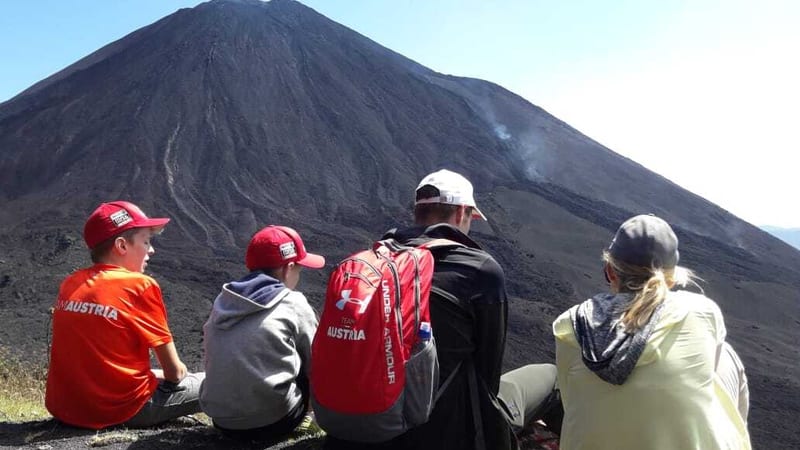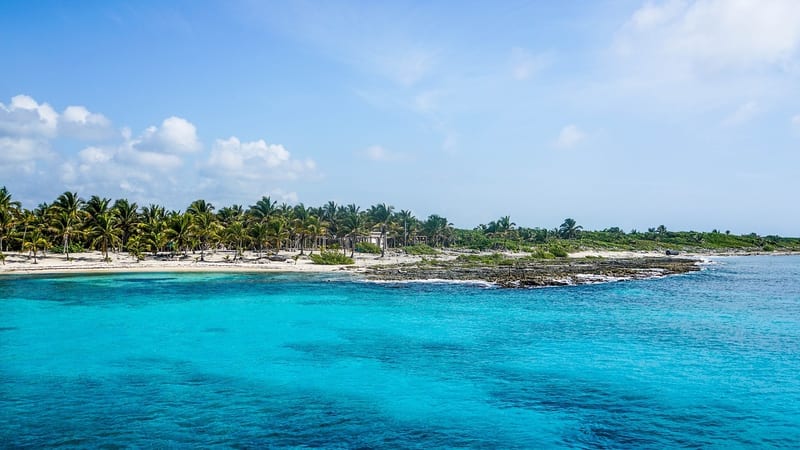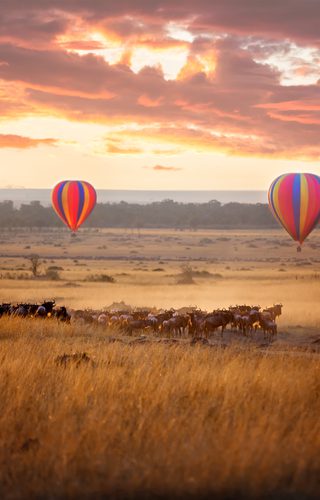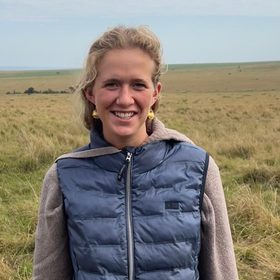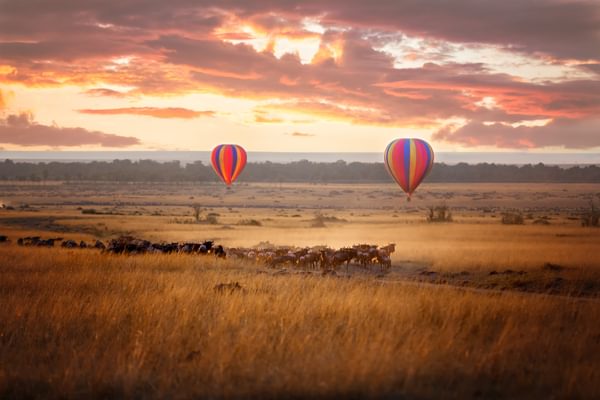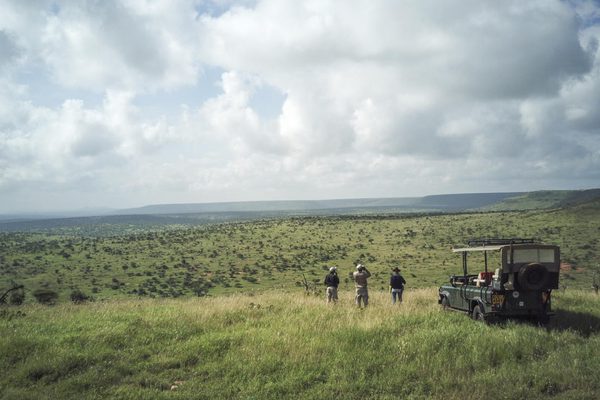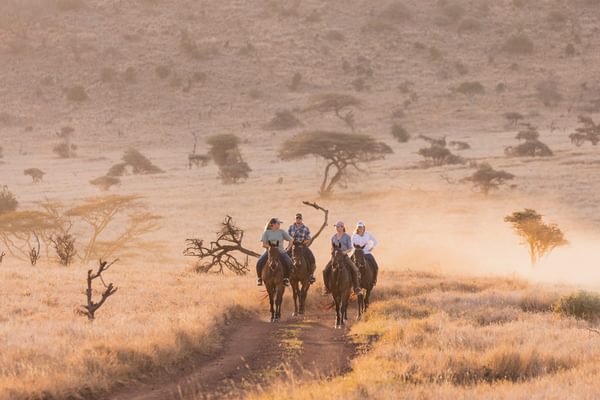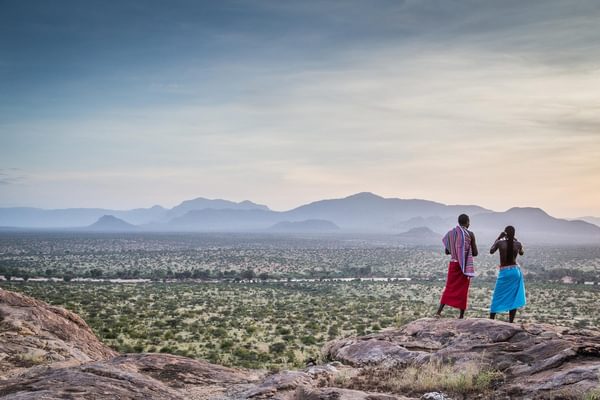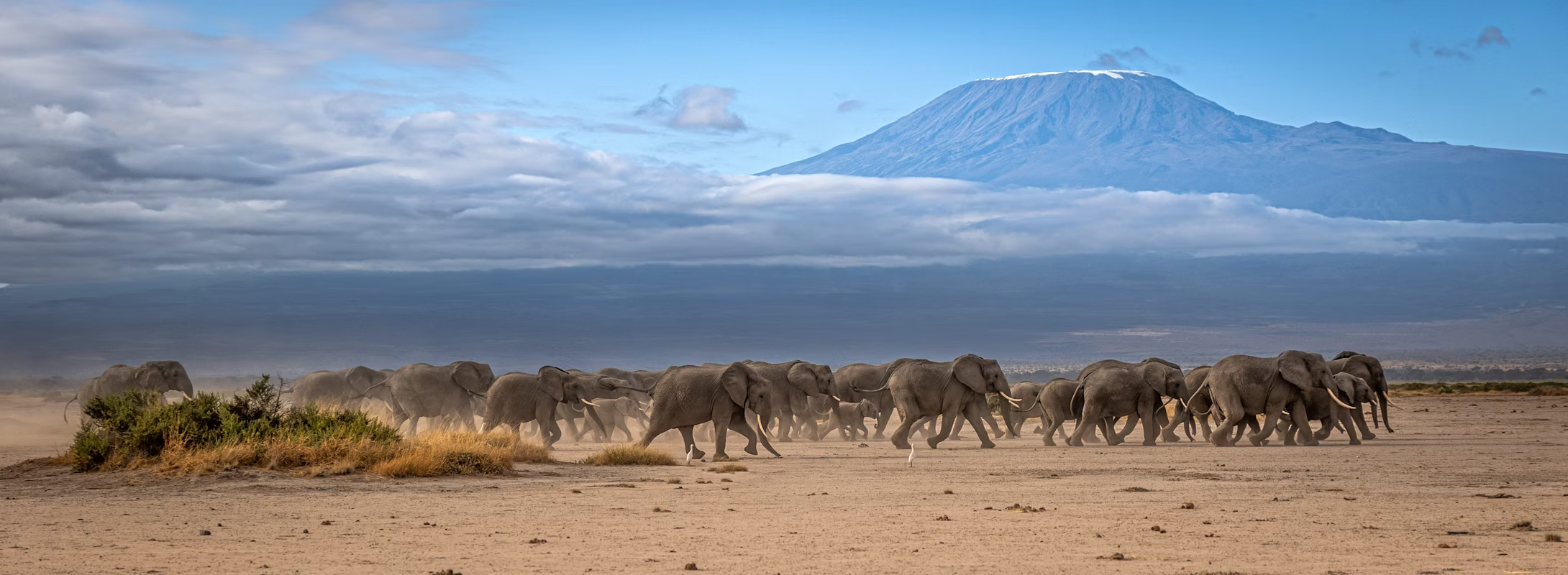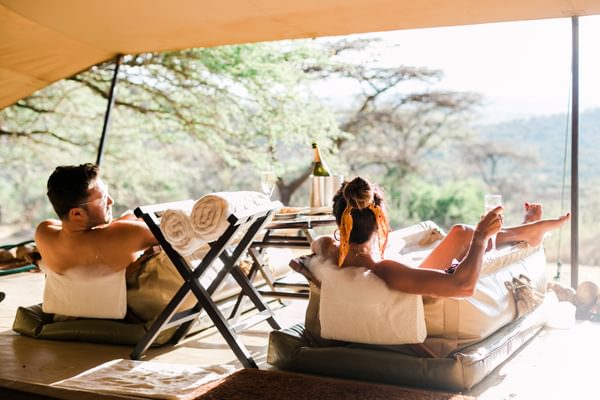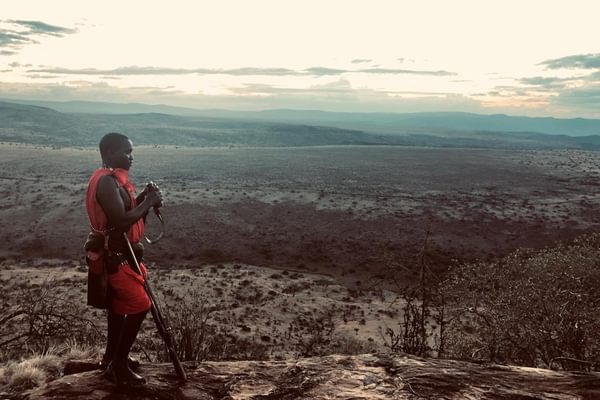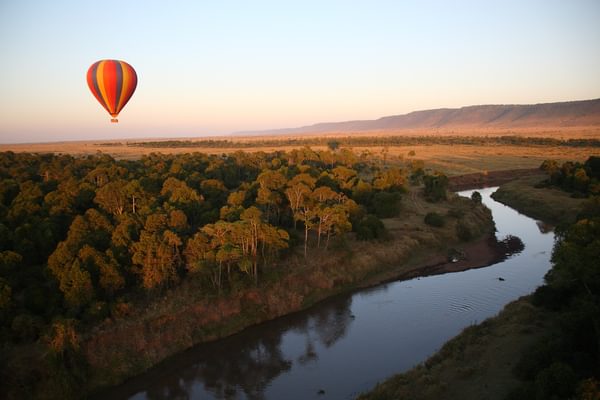The perfect location for your first safari holiday in Kenya
Discover Kenya through a Masai Mara Safari where you can spot the Big Five, meet warriors and enjoy the wilderness in luxury
The Masai Mara rightly deserves its place as one of Africa’s most popular safari destinations, and the experience it provides is exceptional for first-timers, families, and aficionados alike! Wildlife is abundant, with the big five prevalent, and big cat sightings are particularly impressive - in fact, it is where the BBC's Big Cat Diaries was filmed and has been home to many David Attenborough clips.
When to go on your Masai Mara safari
Visit the Mara between July and October and you have every chance of witnessing the migration of wildebeest as they move between the Serengeti in neighbouring Tanzania, and the Mara in Kenya, in search of fresh pasture. Widely seen as the greatest show on Earth, the possibility of a ringside seat for a perilous river crossing draws thousands of visitors each year.
December to February is also a brilliant time to visit the Masai Mara as it is calving season, giving you a fantastic opportunity to see young, newly born animals. Whilst this is the wet season, it is not the peak of the wet season, so particularly in December, rains are short and seeing wildlife amongst the lush green grasses is a real treat.
Avoiding the crowds
There’s no denying that the popularity of the Masai Mara can become an issue with the number of vehicles in the main National Reserve, particularly during high season. The creation of private conservancies around the perimeter of the main reserve has somewhat eased this pressure and offers a more exclusive safari experience, away from the crowds, thanks to their stricter controls on visitor numbers. The beauty of staying in one of the private conservancies – Mara North, Naboisho and Olare Orok, to name just three – is that you can expect the same prolific levels of wildlife as there are no borders between the national and private reserves. These reserves are doing fantastic conservation work, making staying in one good for the environment and wildlife you want to see, as well as for your experience. As well as fewer visitor numbers in a private reserve, you also get the benefit that you can go off-road and enjoy night safaris, something that is not possible in the Masai Mara National Reserve.
Enjoy the sunrise from the skies
One of the most popular experiences on a Kenya Masai Mara safari is a hot air balloon safari. Floating silently over the plains at dawn is the perfect opportunity to get an idea of the vast scale of the reserve, before enjoying a bush breakfast on landing. A real bucket list activity.
Experience Masai culture
One of the biggest draws of the Masai Mara is the chance to have an authentic safari experience and to meet the Masai in their famed red-checked shukas. It is likely that your safari guide will be a warrior or tribe member, and as well as telling you about the wildlife, they will open up about local culture giving you a wonderful insight into Kenyan life. You can also visit Masai villages to get a true sense of Kenyan culture and the semi-nomadic lives some still follow.
Where to stay for your Masai Mara safari
You can choose to either stay in a Kenyan lodge, which is a permanent structure, often with swimming pools, etc and a similar experience to a luxury hotel or in a tented camp. If it is your first safari holiday, you may feel safer in a lodge, but if you choose to stay in tented accommodation, you'll get the full safari experience. Tents offer a luxury experience, with Persian rugs, large double and sometimes four-poster beds, and even hot-water bottles to keep you cosy at night. Camps are often nestled in prime wilderness locations, placing you right at the heart of the action. As night falls, the soft rustle of the African bush and distant calls of wildlife will lull you to sleep. Come morning, the first light reveals fresh paw prints near your tent, a reminder that the wild never sleeps. It’s not just a safari, it’s a true adventure lived from dawn ‘til dusk.
From bush to beach
The Masai Mara is easy to combine with another area of Kenya, such as Samburu, Laikipia or Lewa, or to combine with some relaxation on the beach with one of our safari and beach holidays, either by a quick microlight to the stunning Kenyan coast or by flying to Zanzibar.
Masai Mara Trip Inspiration
Best places to stay in Masai Mara
Top places to visit in Kenya
Types of Kenya holidays
Speak to a Kenya expert today
and start planning your tailor-made holiday

Alistair

Ottilie

Tamara
FAQs About Your Masai Mara Holiday
Planning a holiday to Masai Mara? Our experts share advice on everything from what to pack, when to go, to tips for families, covering the questions we get asked the most.
When is the best time to visit the Masai Mara?
The best time to visit the Masai Mara is during the dry season, from July to October. This is when wildlife is easiest to spot, and the Great Migration is typically in full swing. January to March is another great period, with warm weather and excellent game viewing. The Mara offers strong wildlife sightings year-round, but these months are especially rewarding.
What wildlife can I expect to see in the Masai Mara?
The Masai Mara is famous for its exceptional wildlife. You can see the Big Five – lion, leopard, elephant, buffalo, and rhino – along with cheetahs, hyenas, giraffes, zebras, hippos, crocodiles, and countless antelope species. Birdlife is also prolific. During the Great Migration, you'll witness vast herds of wildebeest and zebra crossing the plains and rivers – a true natural spectacle.
Is the Masai Mara good for first-time safari-goers?
Yes – the Masai Mara is one of the best safari destinations for first-time visitors. Game viewing is reliable, the landscape is open and easy to navigate, and the quality of guiding is consistently excellent. Whether you're staying in the National Reserve or a private conservancy, you're in for a classic, wildlife-rich safari experience.
What’s the difference between the Masai Mara National Reserve and the surrounding conservancies?
The National Reserve is public land with spectacular wildlife but can get busy in peak months. The surrounding conservancies – like Mara North, Naboisho, and Olare Motorogi – are private, with limited vehicle numbers and more flexibility for activities like off-road driving and night safaris. For a more exclusive experience and closer connection with local communities, we often recommend staying in a conservancy.
How long should I spend in the Masai Mara?
We recommend spending at least three nights in the Masai Mara to make the most of your time on safari. This gives you enough time to explore different areas, enjoy varied wildlife sightings, and unwind between game drives. Four or five nights allows for a deeper experience or time to combine the Reserve with a conservancy stay.
Can I see the Great Migration in the Masai Mara?
Yes – the Great Migration typically arrives in the Masai Mara between July and October. This is when huge herds of wildebeest and zebra move into the region from the Serengeti, crossing rivers and plains in search of fresh grazing. While the exact timing can vary, this is the best time to witness dramatic river crossings and predator action.
What kind of accommodation is available in the Masai Mara?
Accommodation in the Masai Mara ranges from classic tented safari camps to luxury lodges and family-friendly safari houses. Many offer stunning views, top-notch guiding, and all the comforts you'd expect, from hot showers to fine dining. Whether you're looking for adventure, romance, or a bit of both, we’ll match you to the right camp.
Is it possible to do a hot air balloon safari in the Masai Mara?
Yes – hot air balloon safaris are a popular highlight in the Masai Mara. You’ll float above the plains at sunrise, watching wildlife from above as the light changes over the landscape. It’s a magical, peaceful experience that ends with a champagne breakfast in the bush – perfect for a special occasion or honeymoon.
How do I get to the Masai Mara from Nairobi?
The quickest and easiest way to get to the Masai Mara from Nairobi is by light aircraft – a flight of around 45 minutes from Wilson Airport. You can also travel by road, which takes around 6 hours depending on conditions. Most of our trips include flights to save time and maximise your time on safari.
Is the Masai Mara suitable for children or family safaris?
Yes – the Masai Mara is great for families. Many lodges and conservancies cater specifically to children, with family tents, child-friendly game drives, and guides who know how to engage young minds. Staying in a conservancy gives you more flexibility, privacy, and freedom to tailor the experience to your family’s pace and interests.




